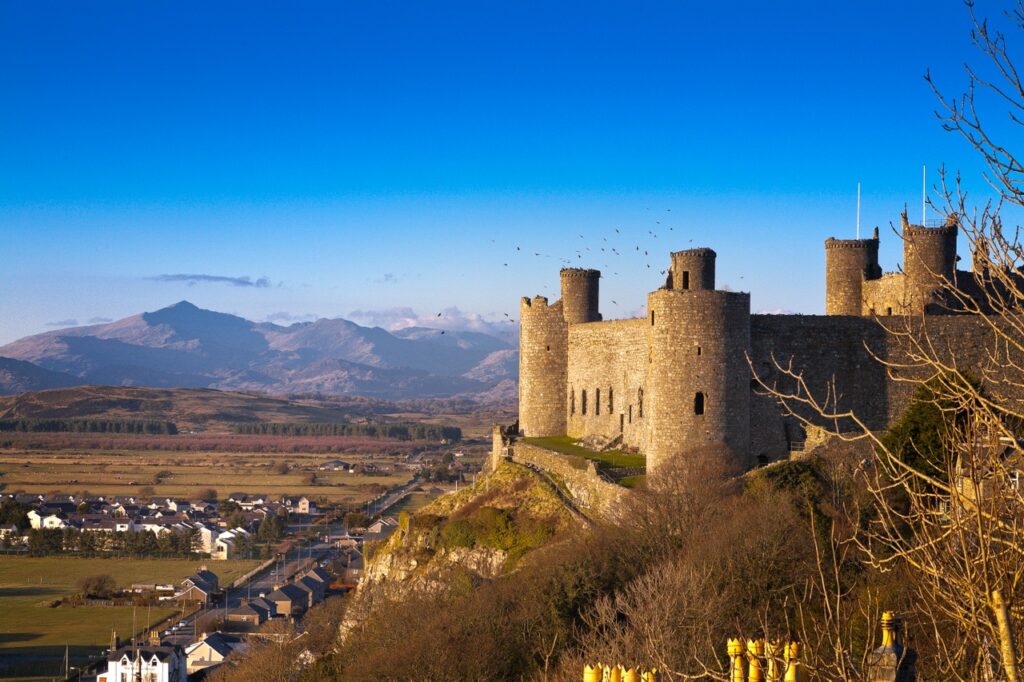Modern-day Industry in Wales

MANY parts of Wales suffered from a continuous decline in heavy industry over the 20th Century, culminating in the virtual disappearance of coal-mining in the 1980s.
However, there is great diversity in industry in today’s Wales, from global players in life sciences and tech, to pioneers in renewable energy and tourism. Wales is known for its workforce expertise and for building strong links between higher education and industry.
As the capital city of Wales, Cardiff is the main engine of growth in the Welsh economy and the significant service centre and economic driver for the wider south Wales economy. The city and the adjoining Vale of Glamorgan contribute a high share of economic output in Wales.
Cardiff is a centre for white-collar professions. The city relies principally on the retail, finance, media and tourism sectors and has been undergoing major regeneration since the late 20th Century, particularly in Cardiff city centre and Cardiff Bay.
Around three-quarters of Wales’s total land area is used for agricultural production and an estimated 57,500 people are directly employed in the sector. Farming is dominated by beef, sheep and the dairy sector, with the arable sector accounting for 10 per cent of agricultural output.
Forest and woodland makes up 14 per cent of the land area of Wales and there are 4,000 jobs in forest-based industries.
Wales has a diverse manufacturing sector. Heavy industry, once a mainstay of the Welsh economy, has largely been in decline over the past century but is still very apparent.
Metal ore refining is a long-established industry and, as of 2007, Corus/Tata Steel had manufacturing facilities at Port Talbot, Llanwern, Newport, Trostre, Shotton, Ammanford, Pontardulais, Tafarnaubach and Caerphilly, although only the Port Talbot Steelworks remained as a major integrated steelmaking plant.
The Steel Company of Wales Ltd was a Welsh steel and tinplate producer which led the restructuring of the steel and tinplate industries around Swansea and Llanelli, building the Abbey Steelworks at Margam, planning a new deep water harbour at Port Talbot and a new tinplate works at Trostre and Velindre. Trostre came into production in 1951 and Velindre in 1956. Nearly all the tinplate and much of the aluminium produced in the UK are made in Wales.
The Steel Company of Wales was formed in 1947 and absorbed into British Steel Corporation in 1967. British Steel then merged with Hoogovens and became Corus UK Limited in 1999. Corus was acquired by Tata of India in 2007, and renamed Tata Steel Europe in September 2010.
The main steel-making sites in Wales are the Tata sites at Port Talbot, Shotton and Llanwern, along with Celsa in Cardiff and Liberty Steel Newport, which resumed production in 2015.
Celsa makes produce for the construction industry, such as bars to make buildings and bridges, whereas Tata makes steel for cars and white goods such as washing machines and tin cans. Newport is one of the biggest steel handling ports in the UK.
Milford Haven Refinery was an oil refinery situated on the Pembrokeshire coast in Wales. The refinery began operating in 1973 under Amoco’s ownership, but in its final days it was owned by Murco Petroleum. The closure of the refinery was announced in November 2014.
Wales has been an important producer of automotive components; Ford had a major engine plant at Bridgend, and BorgWarner has a major components plant in Kenfig, south Wales. However, amid a global cost-cutting drive and citing a lack of demand for its manufacturing capacity, Ford closed its plant on September 25, 2020, with production of the Dragon engine moving to Poland.
TIMET has a plant in Waunarlwydd, Swansea, which is one of the world’s major suppliers of titanium for jet engine blades and medical applications.
During the 1980s and 1990s, a major growth sector in manufacturing was the electronics industry with over 130 north American and 35 Japanese companies establishing operations in Wales. However, this is a characteristic of a ‘branch factory’ economy where routine production is located in one region while higher skill activities are located in another.
In recent years, the service sector in Wales has seen above-average growth.
With its mountainous landscape and numerous sandy beaches, Wales attracts significant tourism. Wales’s leading tourist attractions include Wales Millennium Centre, Cardiff, The LC – Wales’ biggest indoor waterpark and Swansea’s most state-of-the-art gym – Snowdon Summit Visitor Centre, St Fagans National History Museum, National Museum Cardiff, Folly Farm Adventure Park and Zoo, Pembrey Country Park, Newborough National Nature Reserve, Pontcysyllte Aqueduct and Cardiff Castle in the centre of Wales’s capital city.

In 2014, over 10 million domestic trips of one night or more were made in Wales, generating expenditure of £1.7bn.
The demise of ‘smokestack’ industries left a legacy of high unemployment, and although unemployment has declined in recent years, west Wales and the valleys still suffer from economic inactivity. Merthyr Tydfil and Neath Port Talbot, previously central to the Welsh economy, these days have some of the largest proportions of people in the UK not working due to long-term illness or disability.
Wales, though, has largely re-invented itself on the industrial front and currently excels in eight key industry sectors: energy & environment, life sciences, fintech, high level manufacturing, technology, creative industries, food & drink and tourism.
Energy and Environment
One of the first countries to write sustainability into its statute, Wales leads rapid innovation in marine energy initiatives and low-carbon projects. With rich resources for academic collaboration, many companies are already involved with research and technology transfer projects with academic institutions.
Award-winning Swansea based device developer; Marine Power Systems is revolutionising the way that energy can be harvested from the world’s oceans. A growing number of device developers, including Minesto, also choose Wales as their home.
Life Sciences
With world-leading academic expertise and a central Life Sciences Hub, Wales has strong credentials in regenerative medicine and cell therapy and is creating a world-leading regenerative medicine ecosystem.
Medical technology is the largest sub-sector within Wales’s life science sector and the country is home to a number of large corporate multinationals as well as innovative start-ups arising from Welsh academic research such as Medaphor and Cyden.
Other facilities leading in clinical innovation and research include the Welsh Wound Innovation Centre (WWIC) and the £44m Cardiff University Brain Imaging Resource Centre.
FinTech
With an established financial and professional services sector and home to some of the biggest FinTech companies including Starling Bank, Monzo, Curencycloud and home grown Admiral, Wales’s FinTech sector is flourishing. The UK’s first price comparison site Confused.com was launched in Wales and the nation is now a centre for online insurance aggregators with Moneysupermarket and GoCompare also calling Wales home. SMEs including Swansea-based Vizolution and Cardiff’s AMPLYFI have carved a unique niche in the sector.
Wales grows its business talent in the sector through innovative programmes such as the National Software Academy and the Centre for Financial and Professional Services at the University of South Wales. Wales’s dedicated membership association, FinTech Wales, is committed to nurturing talent and developing the ecosystem for businesses to thrive in.
High Level Manufacturing
Wales is at the heart of some of the most exciting new developments in advance materials and manufacturing, working with partners across aerospace, automotive and low carbon industry.
Within the eight universities, academic expertise is applied to research and development across manufacturing, engineering, next-generation power and fuel technology. This includes the Hydrogen Centre at the University of South Wales undertaking research and development in hydrogen technology, such as that powering Riversimple’s RASA – the latest and most radical hydrogen fuel cell car.
Technology
Wales’s growing expertise in the tech sector ranges from a cutting-edge cybersecurity industry to work leading innovation in compound semi-conductors.
Wales is home to over 3,000 home-grown and multinational technology operations and has emerged as the UK centre for Cyber, with south Wales acknowledged as the prime location for research and development and commercialism of security products and services.
With a world-leading compound semi-conductor cluster taking shape in Wales, a partnership of universities, research centres and innovative companies are driving forward the technology to power the next industrial revolution.
Creative Industries
Nurturing home-grown Welsh film and TV, digital and music sectors from the grass roots and supporting companies seeking to work and invest in Wales. With high quality infrastructure, government support and a strong ecosystem across the creative supply chain has major creative production companies flocking to Wales.
International film and television is being shot against the magnificent backdrop of Wales’s natural landscape, supported by talented Welsh crew, production and post production companies. Home-grown, globally successful exports such as Doctor Who, His Dark Materials, Hinterland, Torchwood and Sherlock were all filmed and produced in Wales.
Not just film, there continues to be significant growth in sectors from game design and development to animation, VFX, virtual and augmented reality.
Food and Drink
With a wealth of natural resources, the food and drink industry in Wales is also at the forefront of developing new technologies in food production.
The only place in the UK where you can develop a food and drink product from concept to consumer in one location, over 240,000 people work in the industry in Wales which generates a turnover of £19.1bn.
As well as home-grown success stories, exporting globally such as Penderyn and Castle Dairies, Wales is also home to a host of other international organisations such as Calon Wen, Coaltown Coffee and The Lobster Pot.

Tourism
Tourism in Wales is a £5bn industry with great potential for growth. Wales has three National Parks and five Areas of Outstanding Natural Beauty. The award-winning 1,400km Wales Coast Path, as well as her mountains, rivers and lakes draw visitors from all over the world. Wales has a distinctive culture, with two living languages. It has four UNESCO World Heritage Sites, and more castles per square kilometre than anywhere else in Europe.
Beyond the National Parks, mountain, rivers, lakes – Wales is also investing in and internationally known for its adventure, wellness and hospitality offering with products such as ZipWorld, Adventure Parc Snowdonia and Go Below attracting visitors from around the world.
(sources include Visit Wales, Wikipedia, Trade and Invest Wales, Newport City Council, Media Wales)
Back to HOME PAGE